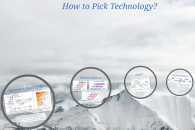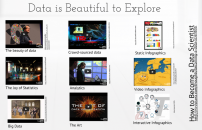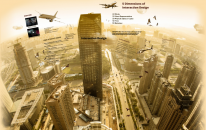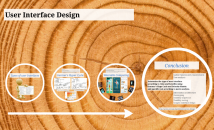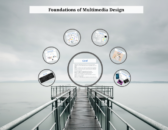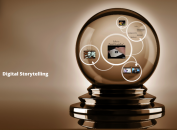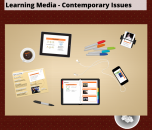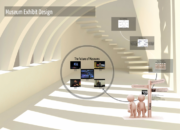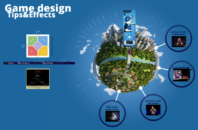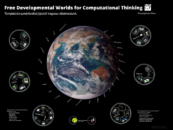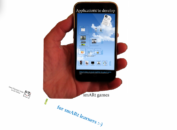Chapters
Definitions
Multimedia is usually recorded and played, displayed, or accessed by information content processing devices, such as computerized and electronic devices, but can also be part of a live performance. Multimedia devices are electronic media devices used to store and experience multimedia content. Multimedia is distinguished from mixed media in fine art; by including audio, for example, it has a broader scope. The term “rich media” is synonymous for interactive multimedia.
Multimedia may be broadly divided into linear and non-linear categories. Linear active content progresses often without any navigational control for the viewer such as a cinema presentation. Non-linear uses interactivity to control progress as with a video game or self-paced computer based training. Hypermedia is an example of non-linear content.
Multimedia presentations can be live or recorded. A recorded presentation may allow interactivity via a navigation system. A live multimedia presentation may allow interactivity via an interaction with the presenter or performer.
Multimedia presentations may be viewed by person on stage, projected, transmitted, or played locally with a media player. A broadcast may be a live or recorded multimedia presentation. Broadcasts and recordings can be either analog or digital electronic media technology. Digital online multimedia may be downloaded or streamed. Streaming multimedia may be live or on-demand.
Multimedia games and simulations may be used in a physical environment with special effects, with multiple users in an online network, or locally with an offline computer, game system, or simulator.
Interactive media normally refers to products and services on digital computer-based systems which respond to the user’s actions by presenting content such as text, graphics, animation, video, audio, games, etc.
Interactive media is related to the concepts interaction design, new media, interactivity, human computer interaction, cyberculture, digital culture, and includes specific cases such as, for example, interactive television, interactive narrative, interactive advertising, algorithmic art, videogames, social media, ambient intelligence, virtual reality and augmented reality.
Any form of interface between the end user/audience and the medium may be considered interactive. Interactive media is not limited to electronic media or digital media. Board games, pop-up books, gamebooks, flip books and constellation wheels are all examples of printed interactive media. Books with a simple table of contents or index may be considered interactive due to the non-linear control mechanism in the medium, but are usually considered non-interactive since the majority of the user experience is non-interactive reading.
Enhanced levels of interactivity are made possible by combining multiple forms of media content. Online multimedia is increasingly becoming object-oriented and data-driven, enabling applications with collaborative end-user innovation and personalization on multiple forms of content over time. Examples of these range from multiple forms of content on Web sites like photo galleries with both images (pictures) and title (text) user-updated, to simulations whose co-efficients, events, illustrations, animations or videos are modifiable, allowing the multimedia “experience” to be altered without reprogramming. In addition to seeing and hearing, Haptic technology enables virtual objects to be felt. Emerging technology involving illusions of taste and smell may also enhance the multimedia experience.
Creative industries use multimedia for a variety of purposes ranging from fine arts, to entertainment, to commercial art, to journalism, to media and software services provided for any of the industries listed below.
Commercial uses: Much of the electronic old and new media used by commercial artists is multimedia. Exciting presentations are used to grab and keep attention in advertising. Business to business, and interoffice communications are often developed by creative services firms for advanced multimedia presentations beyond simple slide shows to sell ideas or liven-up training.
Entertainment and fine arts: Especially to develop special effects in movies and animations as well as video games. Multimedia applications that allow users to actively participate instead of just sitting by as passive recipients of information are called Interactive Multimedia. In the Arts there are multimedia artists, whose minds are able to blend techniques using different media that in some way incorporates interaction with the viewer.
Education: to produce computer-based training courses (popularly called CBTs) and reference books like encyclopaedia and almanacs. A CBT lets the user go through a series of presentations, text about a particular topic, and associated illustrations in various information formats. Edutainment is the combination of education with entertainment, especially multimedia entertainment.
Journalism: News reporting is not limited to traditional media outlets. Freelance journalists can make use of different new media to produce multimedia pieces for their news stories. It engages global audiences and tells stories with technology, which develops new communication techniques for both media producers and consumers.
Engineering: Software engineers may use multimedia in Computer Simulations for anything from entertainment to training such as military or industrial training. Multimedia for software interfaces are often done as a collaboration between creative professionals and software engineers.
Industrial sector uses multimedia to help present information to shareholders, superiors and coworkers. Multimedia is also helpful for providing employee training, advertising and selling products all over the world via virtually unlimited web-based technology.
Mathematical and scientific research uses multimedia mainly for modelling and simulation.
Medicine, doctors can get trained by looking at a virtual surgery or they can simulate how the human body is affected by diseases spread by viruses and bacteria and then develop techniques to prevent it.
Document imaging is a technique that takes hard copy of an image/document and converts it into a digital format (for example, scanners).
References: Definitions and links (unless otherwise indicated as “site” or “pdf”) are copied and edited from English Language Wikipedia as of 1st September 2013. Titles could be further explored through indicated links.
Research
Design issues
Case-studies
T@T lab case-studies:
- Turcsanyi-Szabo, M. (2006). Blending projects serving public education into teacher training. In Kumar, Deepak; Turner, Joe (Eds.) Education for the 21st Century – Impact of ICT and Digital Resources, IFIP 19th World Computer Congress, TC-3 Education, IFIP series Vol. 210, pp. 235-244, Springer, ISBN 978-0-387-34627-4.
- M. Turcsányi-Szabó, P. Simon, A. Abonyi-Tóth, N. Ekker, Zs. Ruttkay, Augmenting Experiences – a Bridge Between Two Universities, Proceedings of ISMAR 2011, 2011. (IEEE publication)
- Formerly TeaM lab
- TeaM lab R&D
- TeT lab Intro web
- TeT lab Intro Unity
- Creative Media R&D
- MAR az ELTEn is
- TeT lab web page

